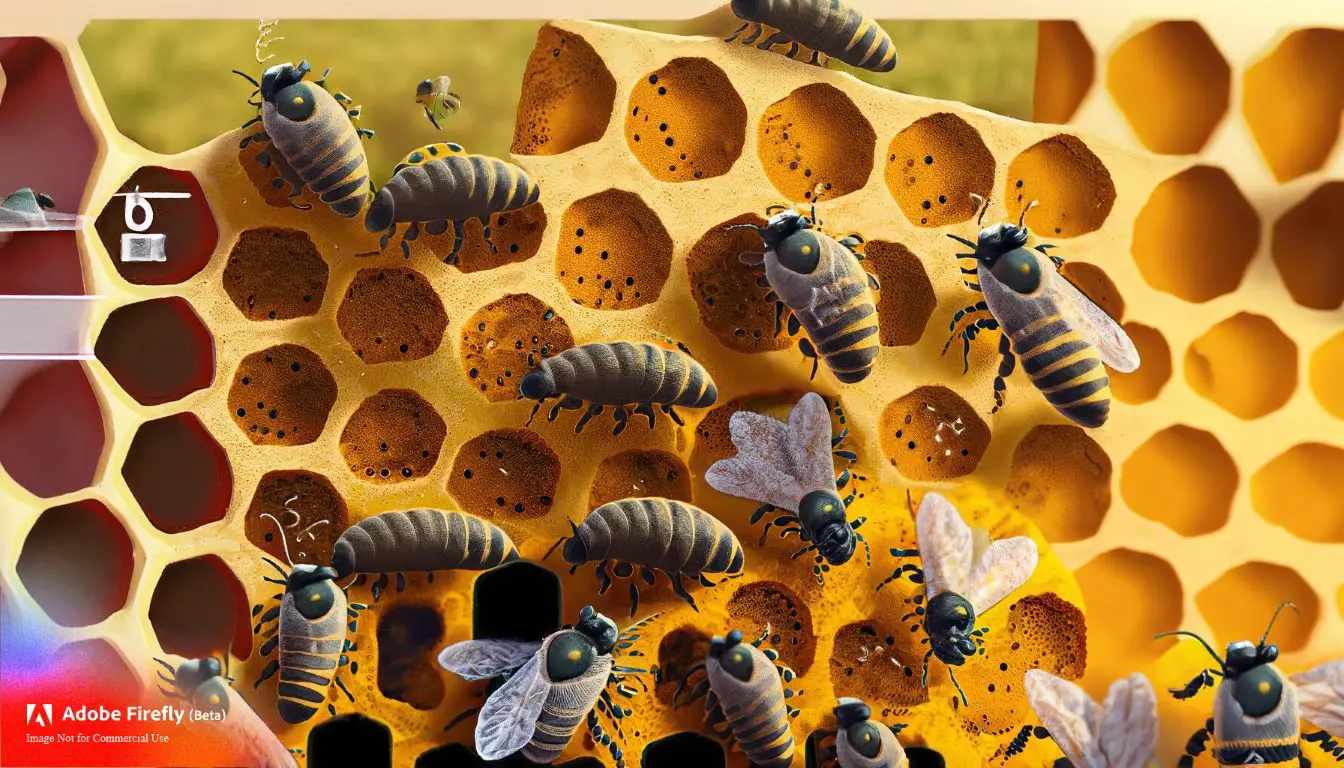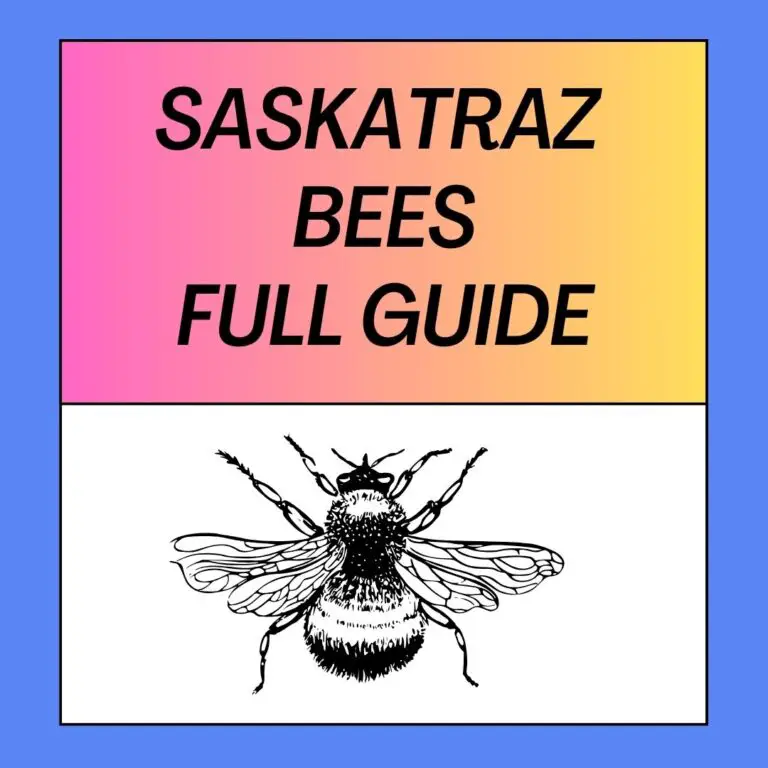
Varroa mites (Varroa destructor) are a formidable adversary to honeybee colonies worldwide. These parasitic mites attach to both adult bees and brood, feeding on their hemolymph and transmitting various viruses. Left unmanaged, Varroa infestations can lead to colony collapse. Beekeepers must employ effective treatments to combat these pests and ensure the health and survival of their hives. In this article, we’ll explore the top 10 best treatments for Varroa mites in beehives, each offering a unique approach to mite management.
Understanding the Varroa Mite Challenge
The Impact of Varroa Mites on Honeybee Colonies
The Varroa destructor mite has emerged as one of the most significant challenges to honeybee colonies worldwide. These minuscule parasites attach themselves to adult bees and developing brood, feeding on their hemolymph and transmitting harmful viruses. Left uncontrolled, Varroa mites can weaken colonies, stunt brood development, and even lead to colony collapse. As responsible beekeepers, it’s imperative to employ effective treatments to manage Varroa mite infestations and safeguard the health of our precious pollinators.
The Need for Effective Mite Treatments
Addressing Varroa mite infestations requires a multifaceted approach, as these pests have demonstrated a remarkable ability to develop resistance to treatments over time. Beekeepers must stay informed about the latest and most effective treatment options to combat this relentless threat. In this comprehensive guide, we’ll explore the top 10 best treatments for Varroa mites, delving into their mechanisms of action, application methods, and recommended dosages.

1. Oxalic Acid Vaporization
How Oxalic Acid Vaporization Works
Oxalic acid vaporization has gained popularity as a method to control Varroa mite populations. This treatment involves vaporizing oxalic acid crystals within the hive, effectively reaching both phoretic mites and those within capped brood cells. The oxalic acid disrupts the mites’ respiratory systems, leading to their demise. Vaporization is best carried out during a broodless period, ensuring that mites hidden within capped brood cells are also targeted.
Recommended Dosage and Application
Beekeepers should follow recommended dosage guidelines when using oxalic acid vaporization. Generally, one treatment is administered during the late fall or early winter months. It’s essential to wear protective gear, including a respirator, and to follow proper safety precautions to ensure both the beekeeper’s and bees’ well-being.
2. Formic Acid Quick Strips
Harnessing Formic Acid’s Power
Formic acid quick strips provide an effective means of Varroa mite control. These strips release formic acid vapor, penetrating the brood chamber and targeting mites within capped cells. Formic acid disrupts the mites’ cellular functions, leading to their elimination.
Application and Dosage Guidelines
Proper application of formic acid quick strips involves placing one strip in the brood box for a specified duration, usually around 10 days. Beekeepers must carefully follow dosage instructions, as overdosing can harm bees and brood. The strips should be strategically positioned to ensure adequate distribution of formic acid vapor throughout the hive.
3. Apistan Strips
Targeting Mites with Fluvalinate
Apistan strips offer a chemical approach to Varroa mite management. These strips contain fluvalinate, which interferes with the mites’ nervous systems. Apistan strips are effective against Varroa mites but require cautious use to prevent mite populations from developing resistance.
Proper Usage for Optimal Results
Beekeepers should adhere to recommended usage guidelines for Apistan strips. Placing one strip for every five frames of bees is a common practice. However, due to the potential for resistance, rotating treatment methods and monitoring mite populations regularly is crucial.
4. Thymol-Based Treatments: Apiguard
Utilizing Thymol’s Natural Properties
Apiguard, a thymol-based treatment, harnesses the power of thymol, a compound found in thyme oil. Thymol disrupts Varroa mite reproduction and development, offering an environmentally friendly approach to mite control.
Step-by-Step Application Process
To apply Apiguard, beekeepers typically use one foil pack per hive, placing it within the hive for a specified duration. The treatment is repeated with a second foil pack to ensure thorough coverage. Beekeepers should closely follow application instructions to maximize effectiveness.
5. Mite Away Quick Strips
Formic Acid’s Role in Varroa Control
Mite Away Quick Strips employ formic acid to combat Varroa mites. The treatment targets mites within capped brood cells, disrupting their reproduction and life cycle.
Ensuring Effective Placement and Dosage
To achieve optimal results, beekeepers must place one Mite Away Quick Strip in the brood box for the recommended duration. Careful adherence to dosage guidelines is crucial, as formic acid can harm bees and brood if overdosed.
6. Oxalic Acid Dribble
An Alternative to Vaporization
Oxalic acid dribble is an alternative to administering oxalic acid to control Varroa mites. This treatment involves applying a sugar solution containing oxalic acid directly onto the bees.
Considerations for Safe and Successful Application
Beekeepers must exercise caution when performing an oxalic acid dribble, as improper application can harm bees. This method is often used during periods of reduced brood rearing and requires careful attention to detail.
7. Drone Brood Removal
Disrupting Varroa Reproduction
Drone brood removal is a mechanical approach to Varroa mite management. Beekeepers remove Varroa mites’ preferred reproductive sites by periodically removing drone brood, reducing mite populations.
Integrating Drone Brood Removal into Beekeeping Practices
Beekeepers can strategically incorporate drone brood removal into their beekeeping routines, using it as a tool in their overall mite control strategy. Monitoring mite levels and adjusting drone brood removal frequency are essential for success.
8. Powdered Sugar Dusting
A Non-Chemical Approach to Mite Control
Powdered sugar dusting is a non-chemical method to dislodge Varroa mites from adult bees. This technique disrupts mites’ attachment, causing them to fall off bees and reducing their population.
How to Properly Dust Bees with Powdered Sugar
Beekeepers can dust bees with powdered sugar using a shaker or sifter. The sugar dislodges mites as bees groom themselves and each other. Regular and repeated dusting can contribute to effective Varroa mite control.
9. Drone Brood Interruption
Understanding the Science Behind Interruption
Drone brood interruption involves removing drone brood frames for a specific duration, disrupting the Varroa mite’s reproductive cycle. Without suitable drone brood cells, Varroa mites are unable to reproduce effectively.
Implementing Drone Brood Interruption Techniques
Beekeepers should carefully time drone brood interruption to coincide with the mite’s life cycle. Removing drone brood frames and monitoring mite levels are essential steps in successful interruption.
10. Natural Selection and Breeding for Resistance
Promoting Genetic Traits for Mite Resistance
Beekeepers can select and breed honeybee colonies with genetic traits that confer resistance to Varroa mites. This long-term approach leverages natural selection to develop mite-resistant bee populations.
Strategies for Successful Breeding Programs
Beekeepers interested in breeding for mite resistance should collaborate with local beekeepers and breeders, share information, and select colonies based on mite resistance traits. Consistent monitoring and evaluation are key to the success of breeding programs.
Choosing the Right Treatment Strategy
Considering Hive Conditions and Beekeeper Goals
Selecting the optimal Varroa mite treatment strategy involves evaluating hive conditions, mite infestation levels, and beekeeper goals. Beekeepers must weigh the benefits and challenges of each treatment method to make informed decisions.
The Importance of Monitoring and Rotation
Monitoring mite populations is essential to gauge treatment effectiveness and adapt strategies as needed. Beekeepers should also rotate treatment methods to prevent mite resistance and maintain long-term control.
Conclusion
Effective Varroa mite management is paramount for the health and survival of honeybee colonies. The top 10 treatments outlined in this article provide beekeepers with diverse tools to combat Varroa infestations. Whether employing chemical treatments, natural solutions, or breeding strategies, beekeepers play a vital role in preserving the well-being of these essential pollinators. By staying informed and adopting a comprehensive Varroa management plan, beekeepers contribute to the protection and prosperity of honeybee colonies for generations to come.






